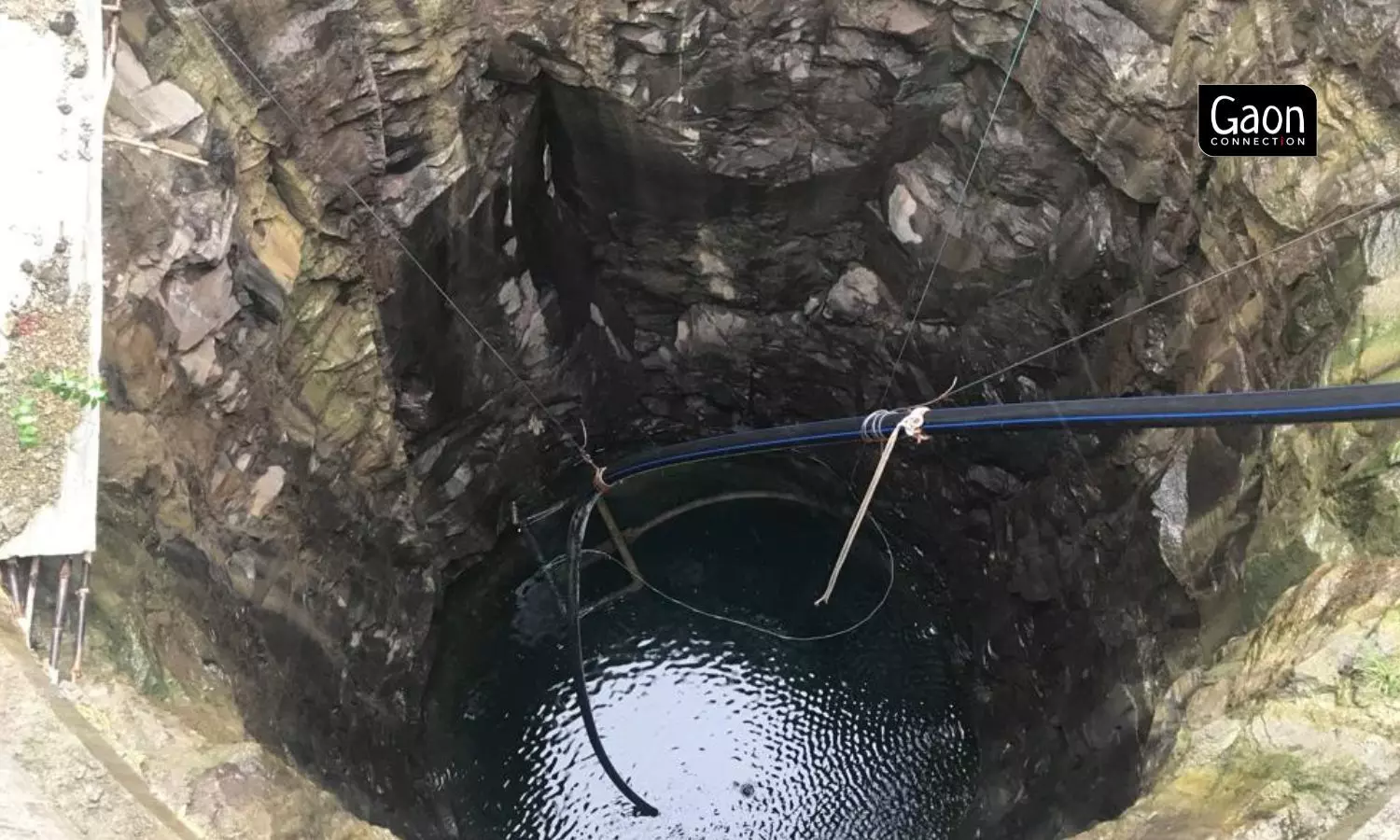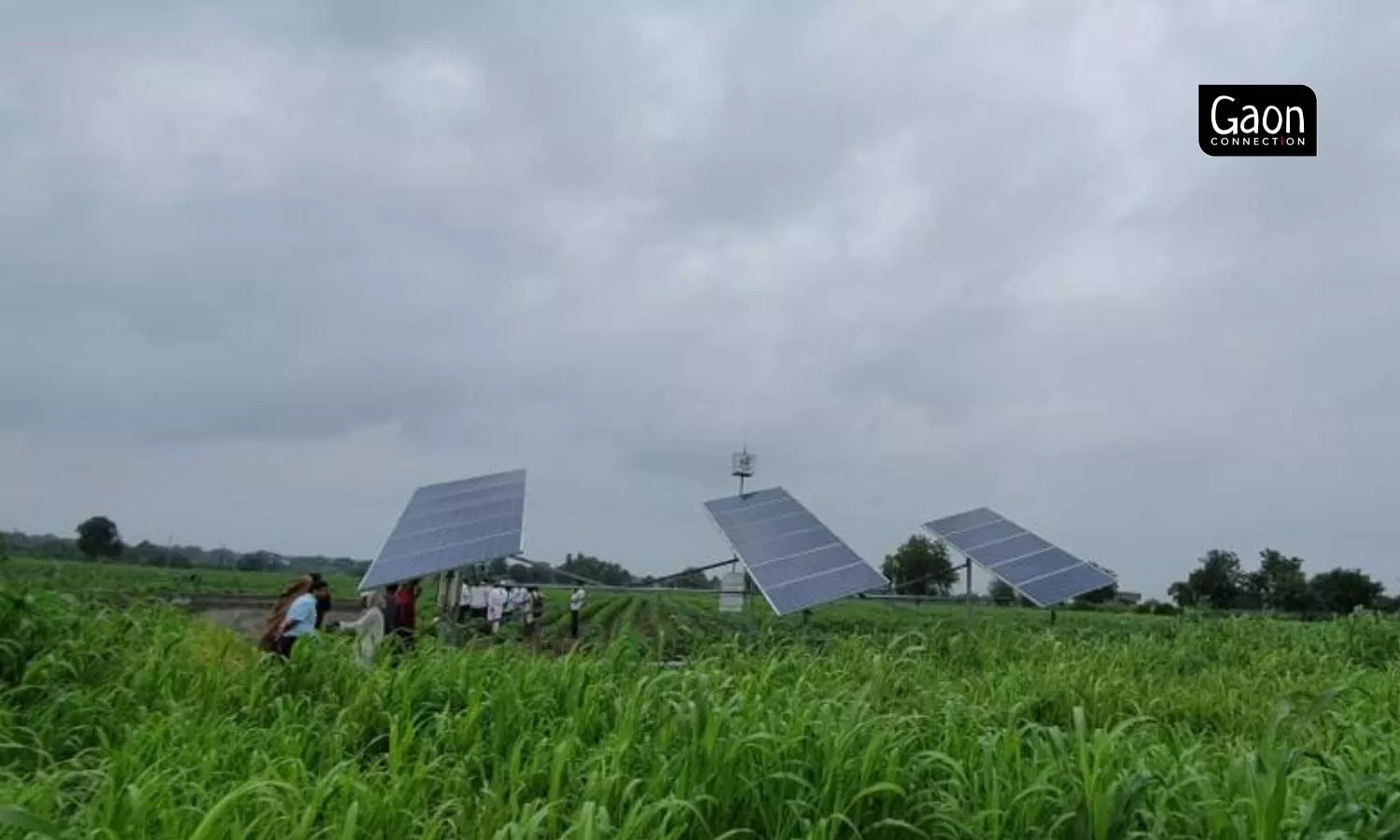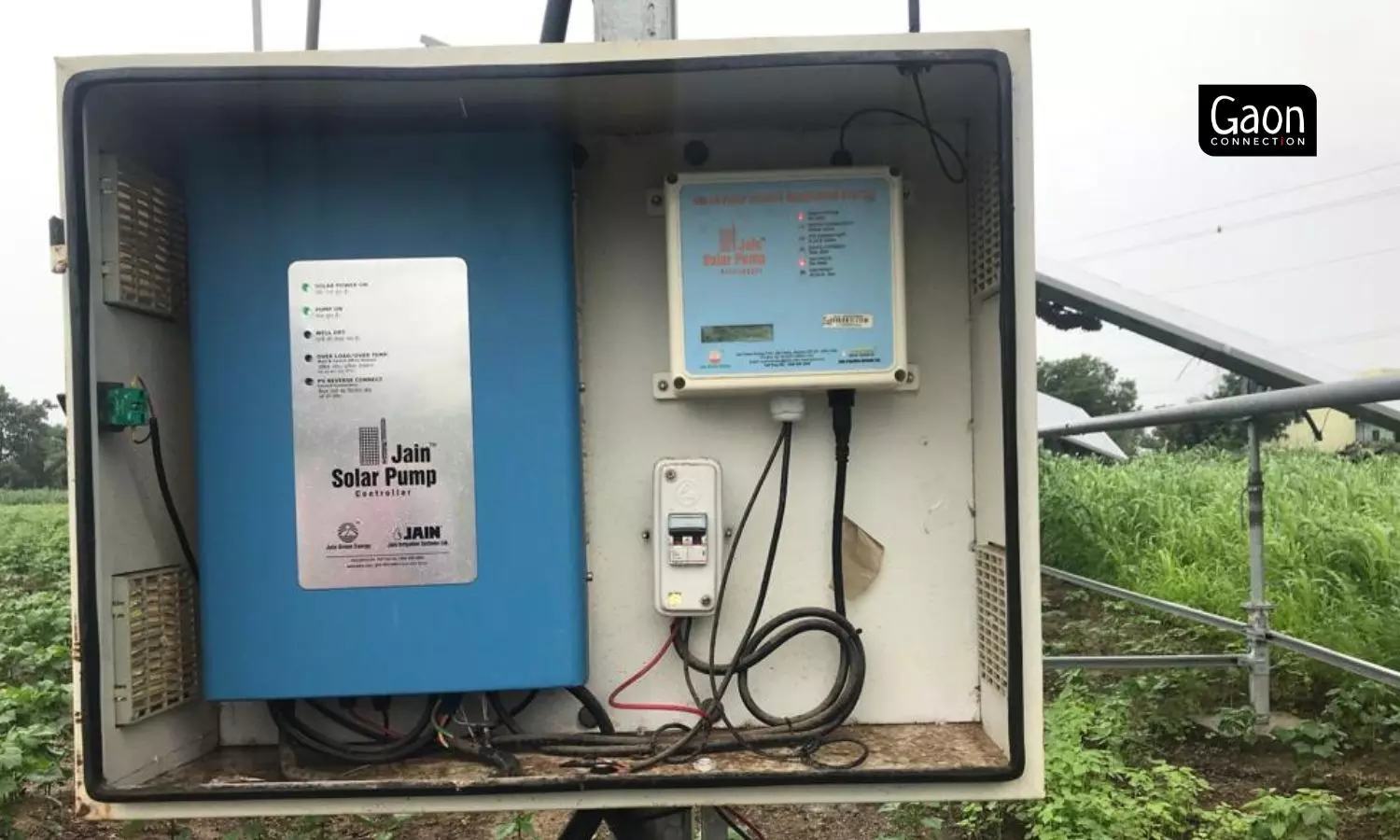It is not uncommon in rural India to see large volumes of water gushing out of a tubewell and flowing into fields of crops. We also see such shots of villages in Bollywood movies.
Have you ever wondered how the tubewell actually sucks out all that groundwater that has collected in aquifers over hundreds of years? On the face of it, are the pumpsets that are powered by electricity or diesel, that draw the water out.
But, the consequences of this are far more complex and have a direct bearing on the growth of the agriculture sector, and also climate change.
Nearly one-fourth of the total electricity consumed in India is by the agriculture sector, mostly to power irrigation pumpsets. It is estimated that the country has over 22 million wells and tubewells — 12 million electric and 10 million diesel-run — that together extract over 250 cubic kilometres of groundwater for irrigation. This is a clear threat to the fast depleting ‘invisible’ groundwater resource.

Tubewell sucks out all that groundwater that has collected in aquifers over hundreds of years. On the face of it, are the pumpsets that are powered by electricity or diesel, that draw the water out.
Also Read: Sustainable groundwater development through solar irrigation in India
Besides the worrisome issue of groundwater depletion, there is also a grave matter of electricity being supplied to the farming sector. Millions of agriculture pump sets run on highly subsidised power supply which is straining power distribution companies (DISCOMs).
This was discussed at great length during a recent conference, Energizing Agriculture and Enabling Just Energy Transitions in South Asia, organised by International Water Management Institute (IWMI) at IIT Gandhinagar, Gujarat.
In Maharashtra alone, which has 4.25 million electric pump sets (20 per cent of the total pump sets in India), MahaDiscom due from agriculture stands at a whopping Rs 50,000 crore. This data was shared by Hippu Salk Kristle Nath of Institute of Rural Management, Anand (IRMA). He also presented findings of IRMA’s assessment of the solar feeder programme in Maharashtra.

Although the PM-KUSUM scheme directs the state governments to prioritise small and marginal farmers, the thrust still remains on large capacity pump sets.
Nath explained how power supply to the agriculture sector is cross subsidised by industrial and commercial consumers. As against an average cost of Rs 6.19 per unit to supply electricity to the agriculture sector, the average revenue is Re 1 per unit only, he said.
A June 2020 paper published in Energy Policy points out that “agricultural electricity subsidies are equivalent to about 25% of India’s fiscal deficit, twice the annual public spending on health or rural development, and two and a half times the annual spending on developing surface water irrigation infrastructure”.
Also Read: Solar projects that generate ‘green’ power, and also support farming and grazing
Solarisation of Agriculture
In such a scenario, ‘solarisation’ of the agriculture sector holds promise, which will also contribute towards India’s target of achieving net zero emissions by 2070. Farmers can use solar irrigation pumps (SIPs) to extract groundwater for irrigation and also sell the extra solar power to the grid and earn revenue. Feeders can be solarised, and solar power plants can be set up.
The objective of the Indian government when it launched PM-KUSUM (Pradhan Mantri Kisan Urja Suraksha evam Utthaan Mahabhiyan) in March 2019, was “de-dieselisation of the farm sector, providing water and energy security to farmers, increasing the income of farmers and curbing environmental pollution”.

SwitchON Foundation is working with women farmers in West Bengal and offering them mini solar pumps that cost Rs 2 lakh only.
Divided into three components, PM-KUSUM has an ambitious target to achieve 10,000 MW capacity through installation of grid-connected solar power plants each with a capacity up to 2 MW under Component A; and solarisation of 3.5 million agriculture pumps under Component-B and Component-C.
Targets and achievements
As on October 31, 2022, an aggregate solar capacity of 73.45 MW has been installed under Component- A of the scheme against the total allocation of 4,886 MW capacity. Further, as per an official press release, only about 152,000 agriculture pumps have been reportedly solarised (till 31.10.22) against the target of 3.35 million pumps under the scheme (some estimates claim 300,000 SIPs have been installed in India). The PM-KUSUM scheme has since been extended till March 31, 2026.
The slow pace of implementation of SIPs was also discussed at the IWMI conference. Participants from South Asia shared their experiences and learnings that could help strengthen the scheme and obtain maximum impact. Low utilisation of SIPs was a far greater concern than the over extraction of groundwater using solar pumpsets.
A couple of years ago, I met farmers in Buldhana district in the drought-prone Vidarbha region of Maharashtra where for four months of a year, these off-grid solar-powered agricultural pumps remain idle.
Learnings and way forward
The conference discussed ways to relook at the PM-KUSUM scheme and here are some learnings that emerged from it.
Firstly, SIPs should be grid-connected and net metered. Farmers barely use these solar pump sets for 100 days in a year. For the rest of the year, the solar power generated should be fed into the grid, which will benefit both the DISCOMs and the farmers.

Power supply to the agriculture sector is cross subsidised by industrial and commercial consumers.
Gujarat’s Suryashakti Kisan Yojana (SKY) scheme, launched in 2018, is often quoted as a good example. Under SKY, farmers generate electricity using solar panels for their captive consumption (irrigation) and sell the left-over generated electricity to the government via grids. SKY farmers receive 12 hours of daytime electric supply whereas non-SKY farmers receive only eight hours.
Under the SKY scheme, the centre provides 30 per cent subsidy and 65 per cent loan to the farmer (repayable in seven years). The beneficiary farmer has to pay only five per cent upfront cost. The government will procure electricity at a rate of Rs 7 per unit for seven years and then at Rs 3.50 for the remaining 18 years. The SKY scheme is expected to cover 1.5 million farmers in 33 districts and will provide them with solar power through 7,060 feeders.
Also Read: Post-harvest cold storage unit puts smiles back on the faces of farmers in Odisha
Secondly, Solarisation of agriculture must keep in mind the needs of small and marginal farmers (sharecroppers and tenant farmers). This group of farmers, which owns less than two hectares of land, accounts for 86.2 per cent of all farmers in India, but owns just 47.3 per cent of the crop area, according to provisional numbers from the 10th agriculture census 2015-16.
Gender also has to be at the centerstage of our solar programme because women carry out the majority of the farming activities in India. Some organisations are working with women farmers and helping them access SIPs.
Although the PM-KUSUM scheme directs the state governments to prioritise small and marginal farmers, the thrust still remains on large capacity pump sets (two horsepower, five horsepower and above). Interestingly, a number of start-ups in India are working with small and marginal farmers and making solar technology available to them.

Farmers barely use these solar pump sets for 100 days in a year. For the rest of the year, the solar power generated should be fed into the grid, which will benefit both the DISCOMs and the farmers.
For instance, SwitchON Foundation is working with women farmers in West Bengal and offering them mini solar pumps that cost Rs 2 lakh only. It was rightly noted that the lack of financial access was holding back small and marginal rural farmers in acquiring solar pumps.
Similarly, Kalinga Renewable Energy in Odisha has developed Mobile URJA model. Small and marginal farmers who have small landholdings can share the resources (solar pumpsets) on a need basis.
Thirdly, Post installation service and maintenance of SIPs needs to be addressed. Gujarat Energy Research and Management Institute (GERMI) is working with farmers to build their capacities and train them in using SIPs, and its recent study found that many farmers were unaware about the basic components of the scheme and how to make the best use of SIPs.
Last but not the least, in the concluding session of the IWMI conference, Tushar Shah, an economist and public policy specialist, pointed out that the main objective of the new PM-KUSUM scheme should be to metre 19 million unmetered grid-connected tubewells; create a farmer-participatory rural power grid; and enable farmers to earn by selling 60-70 per cent of their solar generation.
Solarising India’s agriculture sector holds great promise and it should move ahead by taking in consideration the learnings of the past years.
Nidhi Jamwal is Managing Editor of Gaon Connection. Views are personal.



















